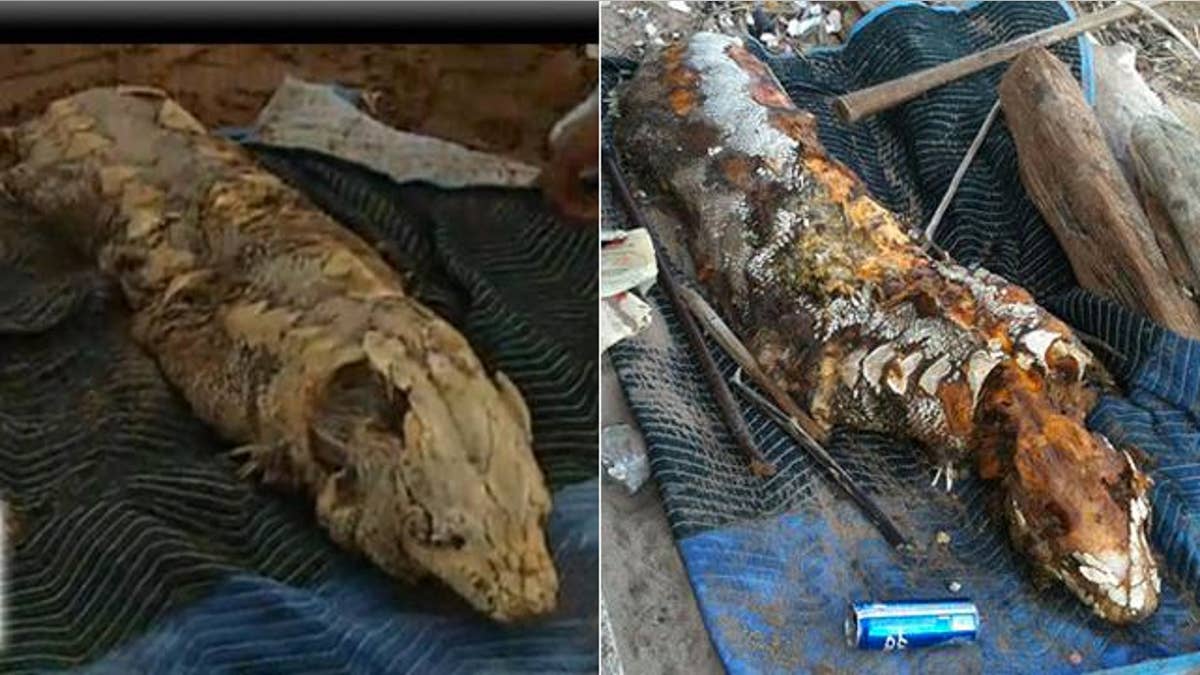
A 'sea monster' has washed up beneath the Brooklyn Bridge in New York. At left, the creature on May 21 in a frame from a NY1 video. At right, the beast 5 days later, as seen on Gawker.com. (NY1 / Gawker.com)
You might expect a cement-shoed mobster in the waters off New York -- but a sea monster?
Local newspapers and blogs have been consumed with the news that a "sea monster" has washed up at the foot of the famed Brooklyn Bridge in New York City. The seven-foot long beast, dubbed the East River Monster, was found on the Manhattan side of the bridge on May 21.
And was it ever ugly.
"It had the scales of a fish, body of a serpent, head of a pit bull and was the size of a large alligator," wrote Maureen O'Connor, a blogger on the Gawker website.
Theories ran the gamut from horse to alligator to Loch Ness beast -- or even a relative of the Montauk Monster.
Marine biologists cut through the rumors, however, calling it nothing more than a common Atlantic fish.
"We could tell it was an Atlantic sturgeon right away," Kim Durham, a rescue program director and biologist for the Riverhead Foundation for Marine Research and Preservation in Riverhead, N.Y., told Life's Little Mysteries.
"They have bony plates all over their bodies. There's no mistaking a sturgeon," she said.
Easy for you to say, especially when the carcass is fresh. But the East River Monster was never removed, instead remaining beneath the bridge rotting away. And several days later, the beast looks more like a monster than ever before.
A Thursday blog post on Gawker shows the deteriorating beast -- and at this point, a Riverhead Foundation spokesman agreed that the critter was far harder to explain for the ordinary passerby.
"Those scaly things? The body itself looks like a sturgeon, the skull looks kind of weird ... but maybe it's the view," Julika Wocial, rescue program supervisor for the Foundation, told FoxNews.com.
"It doesn’t really look like a sturgeon" anymore, she said. According to Wocial, the New York State Department of Environmental Conservation does work with sturgeons. The DEC did not immediately respond to FoxNews.com requests for more information, however.
According to Gawker, the police had finally arrived and were awaiting the sanitation department, which would deal with the remains -- finally.
According to the National Oceanic and Atmospheric Administration, a 1995 study found that there were about 9,500 juvenile Atlantic sturgeons in the Hudson River.
